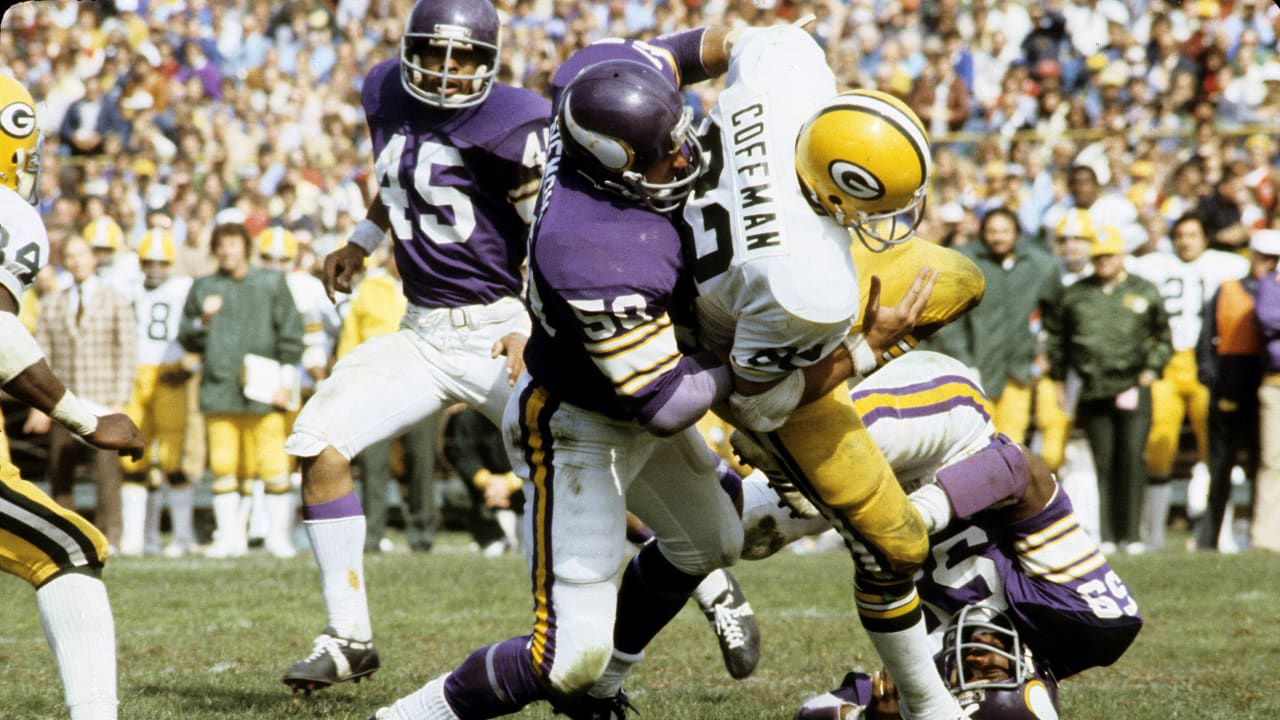Viktor
Well-known member
- Mar 19, 2019
- 2,552
- 0

When asked why Plan 3 wasn't automatically adopted because it would involve the fewest departures from the divisions used from 1967-70, Browne said the mindset of owners was that the 1970 realignment "would be in place for a long time."
"They had been told after the merger [agreement in 1966] that the divisions which were set for the late '60s would only be temporary and that they would have their chance to get nearly all they wanted before the 1970 season started," Browne said. "Heck, even in the nine 'semi-final' realignment plans, the Packers and Bears were not together in all nine proposals. Pete Rozelle was trying to please all the clubs and realized late in the process that was going to be impossible. Thus, he finally moved on to the 'Flower Vase Method.' "
Vikings Division Assignments
1961-66 NFL Western Conference: Baltimore Colts, Chicago, Detroit, Green Bay, Los Angeles Rams, San Francisco
1967-69 NFL Central: Chicago, Detroit, Green Bay, Minnesota
1970-2001 NFC Central: Chicago, Detroit, Green Bay, Minnesota and Tampa Bay (1976-2001)
2002-Present NFC North: Chicago, Detroit, Green Bay, Minnesota
Entering their 60th season, the Vikings have never played without the Bears, Lions and Packers in their division.
Would the NFL be as special as it is today, would the heritage of the league's first 100 seasons be so rich without the divisional rivalries that developed from the 1970 realignment until the current structure was implemented in 2002?
Browne believes rivalries are based "largely by on-the-field competition instead of geographical proximity," and while he doesn't live in either Border Battle state, he does make a couple of good points.
"Some [rivalries] last for decades, while others exist for a short period of time," Browne said. "For example, I agree that the Packers-Vikings rivalry has been extremely intense, but a primary reason is that the series record during the last 60 years has been pretty tight."
The Vikings are 54-62-3 in 119 all-time matchups, including 1-1 in postseason games.
"If the series were 81-33, I am not sure it would be much of a rivalry despite the geographical proximity of the two fan bases," Browne said.
"Sometimes geography has little to do with a rivalry," he continued. "For example, there was not a more heated rivalry in the '70s than the Raiders and Steelers who represented cities (Oakland and Pittsburgh at the time) that were 2,500 miles apart. The rivalry was built on the field with great players, two legendary coaches in John Madden and Chuck Noll, and memorable playoff games. However, right now, it's not the first rivalry an average football fan would list as 'Most Intense.' "
Vikings Head Coach Mike Zimmer grew up immersed in the NFC Central. Now entering his seventh season at the helm of Minnesota, the Illinois native explained what it means to him to coach in the NFC North that has the same four original teams as its predecessor.
"I was a Bears fan growing up, and it was part of the '85 Bears, that defense they had," Zimmer said, "and being able to watch Fran Tarkenton and Bud Grant and Bart Starr and all of the great players, Barry Sanders in Detroit, and all of the great players they've had in this division.
"It's always an honor," Zimmer added. "It's an honor to be in the National Football League, it's an honor to work for the Vikings and for the fans that we have here and the ownership."
When Zimmer joined the Vikings, Minnesota had gone just 4-12-1 in its previous 17 games against Green Bay, a run from 2006-13 that included one playoff game. He wanted to restore a consistent balance between the teams and has, with the Vikings 5-6-1 in the past six seasons.
Zimmer also entered the NFL in 1994 as defensive backs coach of the Cowboys. He spent six seasons in that role and another seven as defensive coordinator, fully experiencing the rivalries of the current NFC East that still has four members from the 1970 alignment.
Browne noted the Dallas Cowboys, who entered the NFL at the same time as the Vikings and began play a season earlier in 1960, wanted to be in the NFC East "because they saw value in playing the big city teams such as New York and Philly twice a year."
The same "Plan 3" scenario that placed Minnesota in the Central was the only option that placed Dallas in the East.
Browne credited marketing efforts by Tex Schramm — the Cowboys first president who volunteered his team to play on Thanksgiving Day in 1966 for increased national exposure — and on-field success with helping Dallas increase its popularity.
The Cowboys have the highest playoff percentage in the NFL at 55.0 (33 appearances in 60 seasons) and the Vikings rank second at 50.8 (30 appearances in 59 seasons).
When King visited Twin Cities Orthopedics Performance Center in July, Vikings.com asked the national journalist about the impact of Elkjer drawing the plan she pulled from the vase.
"There's just something about [Cowboys Owner] Jerry Jones being in New York and Philly and Washington, it just seems like it's a little more right," King said. "Obviously, the Vikings, it's just so much better that it would be Bud Grant vs. George Halas, Bud Grant vs. Vince Lombardi.
"The Bud Grant-Vince Lombardi rivalry is one of the great ones ever," King continued. "The great thing is Bud Grant is still around to talk about it in year 51 of this alignment. I can't imagine the NFL without a Minnesota-Green Bay rivalry. I can't imagine it without a Green Bay-Chicago rivalry, without the Vikings and Bears, which is a great rivalry. Thelma Elkjer's magic fingers picked the right alignment. That's all I can say."
